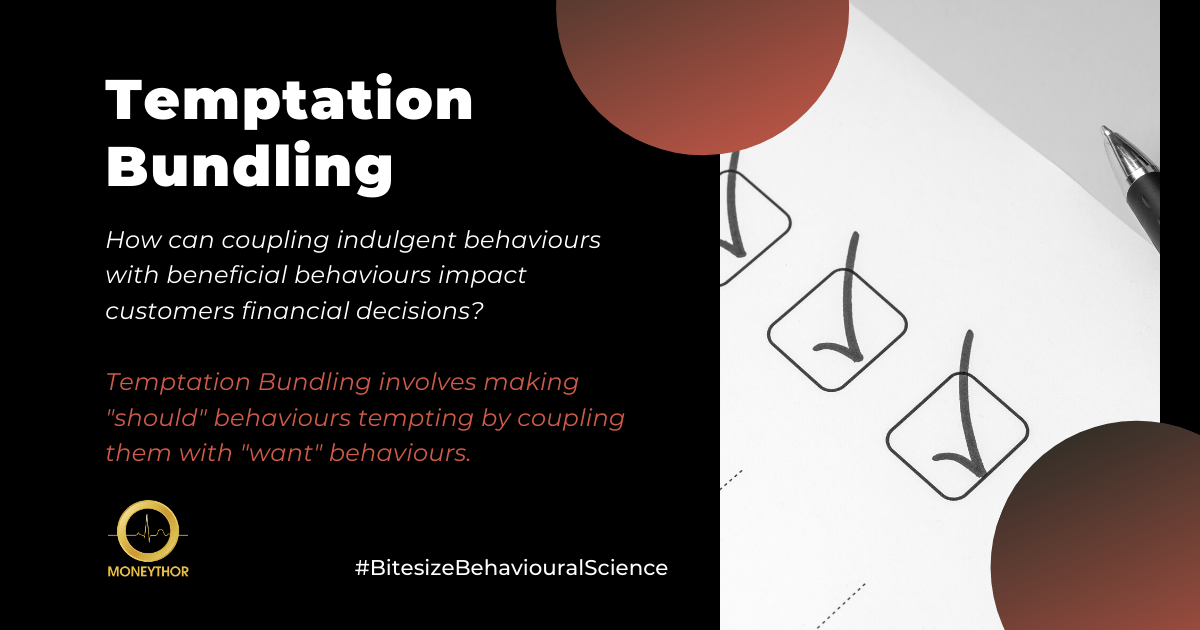How can coupling indulgent and instantly gratifying behaviours with beneficial behaviours that have long-term benefits but require willpower impact customers financial decisions?
According to Milkman et al, “temptation bundling involves the coupling of instantly gratifying “want” activities with an engagement in a “should” behaviour that provides long-term benefits but requires the exertion of willpower.”
It involves making “should” behaviours like exercising tempting by coupling them with something considered more enjoyable like listening to an audiobook or watching TV. Temptation bundling has two major benefits:
- It encourages people to carry out “should” beneficial behaviours.
- It reduces the likelihood that people will engage in indulgent activities that they will later regret.
There are many examples of temptation bundling, including getting a pedicure while working on a paper, eating an indulgent meal while spending time with a difficult relative or earning points and prizes in a step challenge.
People value mechanisms that help them to select beneficial behaviours. Commitment devices, like self-imposing deadlines or placing money in forfeiture if one fails to achieve their goal, are a popular way of encouraging better behaviours. Similar to traditional commitment devices, temptation bundling can positively impact a person’s behaviour and it can help to form long-term healthy habits as people look forward to the tempting behaviour while carrying out the beneficial behaviour. Temptation bundling encourages people to do the things that are important to them but are never urgent enough to get done.
How can temptation bundling be applied to financial services?
In the context of financial services, temptation bundling can be used to encourage better budgeting, increased savings and smarter financial decision-making.
- Savings
Having savings reduces financial stress, helps avoid debt and provides a greater sense of financial freedom. While the benefits of savings may be obvious, most people have little to no savings and find the process of saving tedious. Using temptation bundling, banks can make saving money more enjoyable.
For instance, one could turn expensive habits into savings opportunities. Every time a customer buys clothes or eats out, a percentage of the amount spent can be added automatically to saving goals. The customer still gets the enjoyment of buying new clothes or eating a delicious meal but can feel less guilty knowing that these expenses contribute to their savings too.
- Loyalty
Banks can provide extra loyalty points or rewards to customers who carry out beneficial financial behaviour. For example, they can reward customers with loyalty points for every budget they set up or every savings goal they create or even when they pay a bill on time.
- Gamification
Banks can consider developing quizzes or challenges that align with goal or budget setting to make the process of financial management more fun and encourage customers to do it.
Whatever the chosen mechanism for implementing it, temptation bundling has been proven to change people’s behaviour for the better and for the long-term. Managing finances doesn’t need to be a chore and with some simple interventions like gamification, loyalty points and savings goals that tempt customers, they can take control of their financial situation and plan better for their future.

